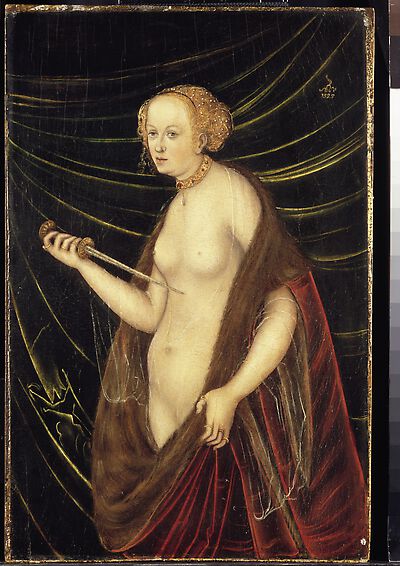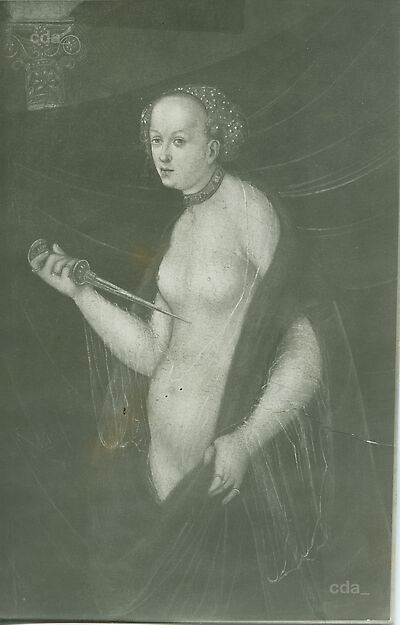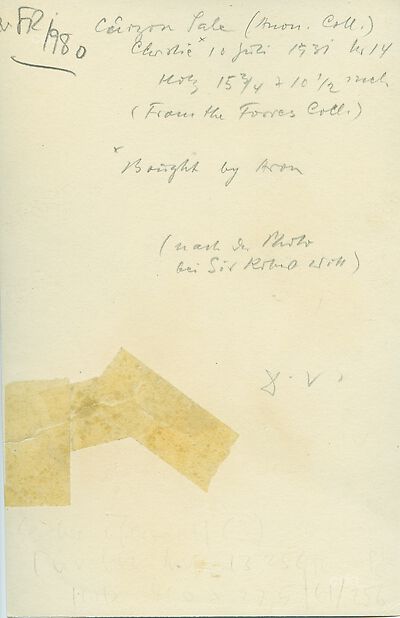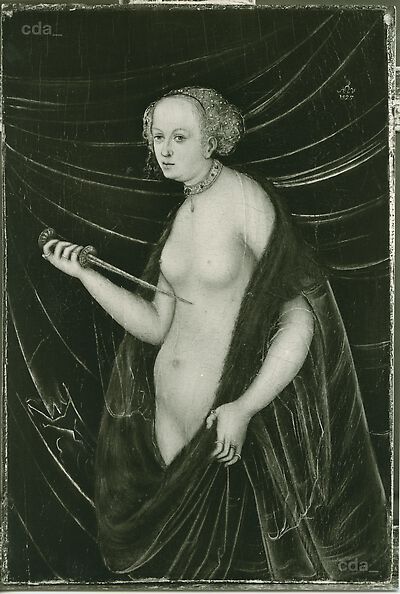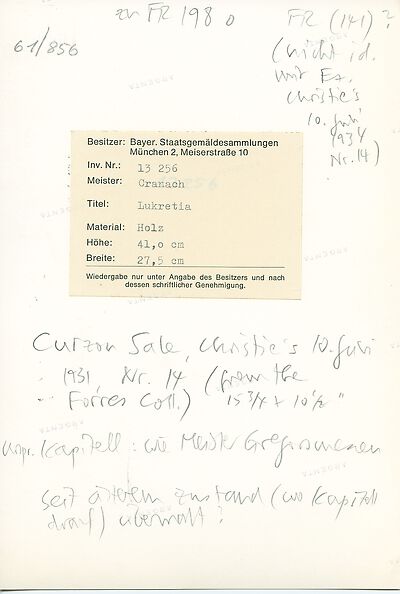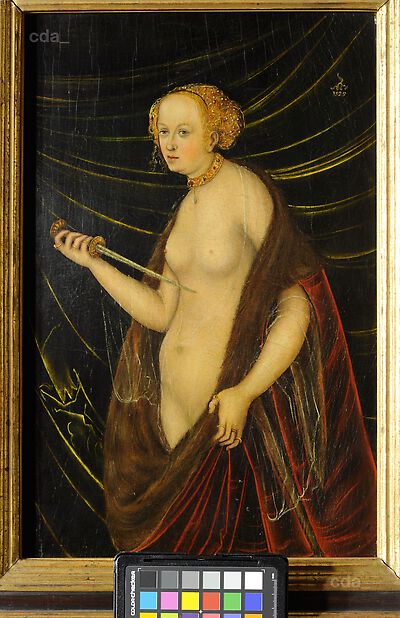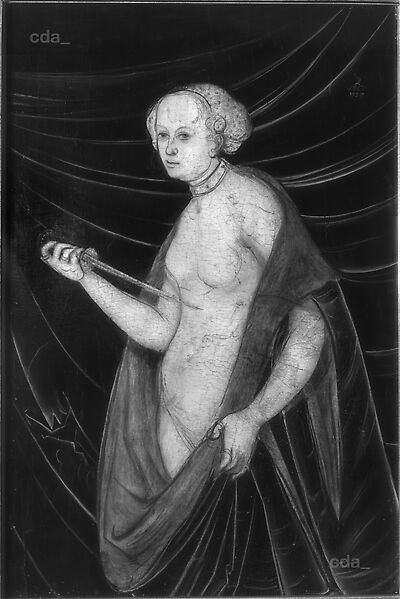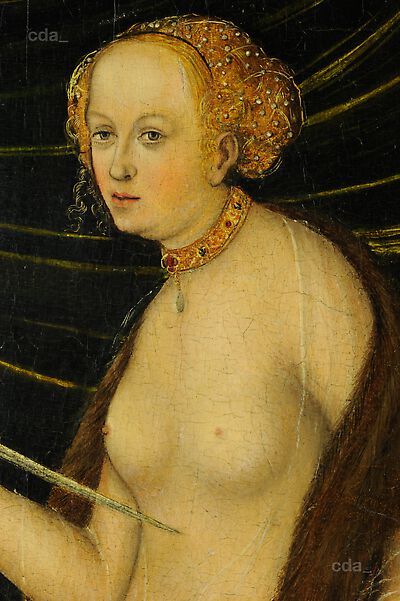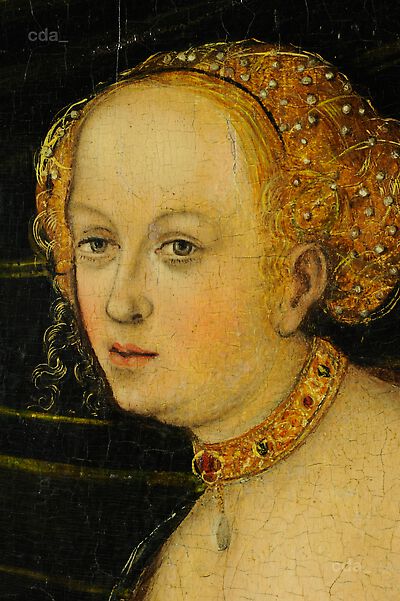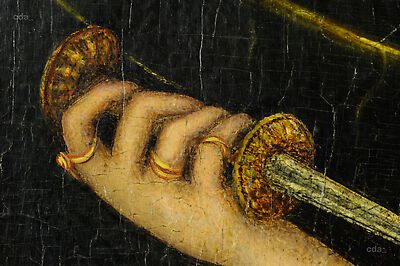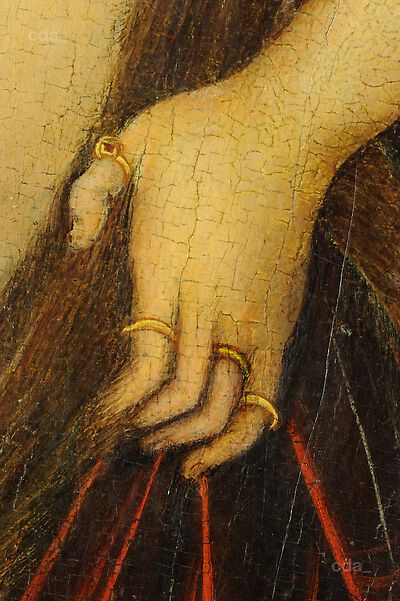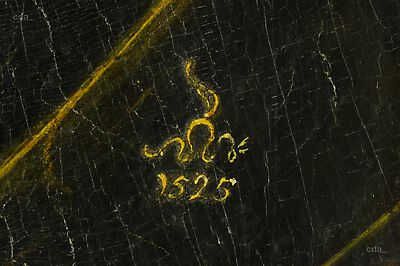The painting depicts Lucretia as a standing, three-quarter length nude with an overcoat. Lucretia is inclined slightly to the left and her head and gaze also point in this direction. Her lower right arm is raised and in her hand she holds the dagger. The long dagger is pointed at
The painting depicts Lucretia as a standing, three-quarter length nude with an overcoat. Lucretia is inclined slightly to the left and her head and gaze also point in this direction. Her lower right arm is raised and in her hand she holds the dagger. The long dagger is pointed at the centre of her chest just below the breasts. Her left, lowered hand holds the dark red fur-trimmed overcoat, which appears almost to slip off her shoulders. In addition she wears a transparent undergarment with very wide sleeves. She wears a richly decorated neckband with a pendant, has rings on the fingers of both hands and her hair is pinned up under a net bonnet decorated with pearls.
The background consists of a green draped curtain.
According to the legend Lucretia lived in the 6th century BC and was the beautiful and virtuous wife of the roman Collatinus. The roman King's son - Sextus Tarquinius fell in love with her. During a stay in her house Sextus threatened to kill her and shame her honour if she did not surrender to him. After the rape Lucretia had her father and husband vow vengeance and then she stabbed herself. The event led to an uprising in which the royal family was overthrown and the Roman Empire became a Republic.
Depictions of Lucretia who was seen as the epitomy of female virtue, chastity, fidelity and honour enjoyed great popularity, particularly in the 16th century.
[Literature: Bierende 2002, Follak 2002, Livius 1909]

